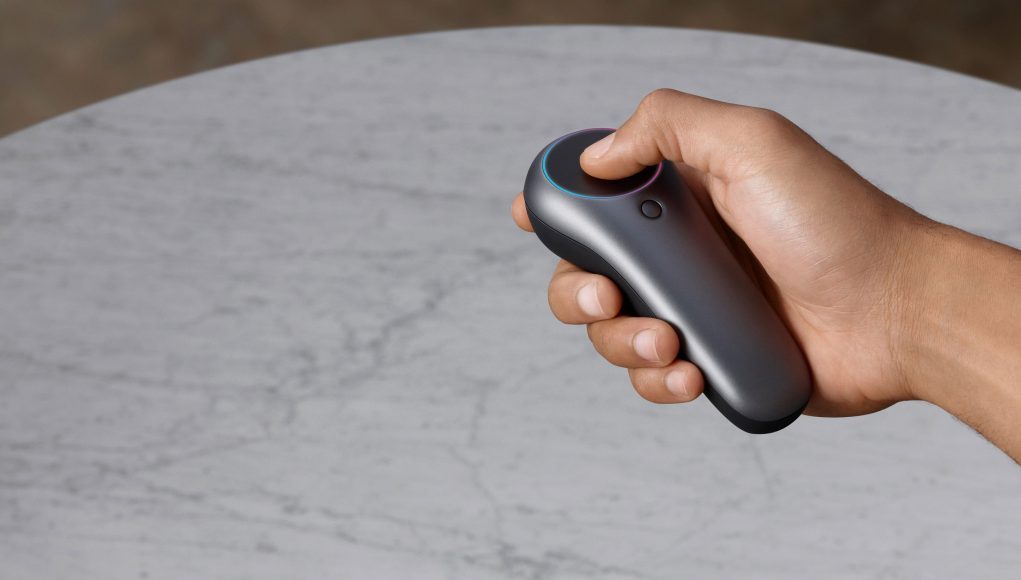Magic Leap One, the long-awaited AR headset from the secretive titular Florida startup, appears to be on its way to its supposed 2018 release date, as the headset’s motion controller, dubbed Control, has just hit the FCC for testing.
When we first heard about Control at the headset’s unveiling late last year, we were told the motion controller featured a touchpad, a trigger, a single button, and both haptic feedback and something called “force control.”
According to the FCC filing, Control also contains “a transmitter that generates 3 orthogonal AC magnetic fields at frequencies ranging from 28.5 kHz to 42.42 kHz,” which is used to positionally track the controller, giving it six degrees of freedom (DOF).

Control is said to feature a single USB-C port, which for the purposes of testing was powered using a proprietary Magic Leap power supply, model number M3001.
The filing also reveals that Control is assembled in Mexico. Its model number is M2001.

While the filing doesn’t reveal much more about Control, the company has also filed a Request for Confidentiality with the FCC, which limits them from publishing internal photos, test setup photos, and the user manual for 180 days from the date of the filing’s initial publish date (today). If the company markets the device before the end of that period, the FCC will likely then publish the documents stated above.
If the company waits the full 180 days to release the headset, that would put Magic Leap One with a max release date of December 18th, 2018. Filing for FCC testing tends to be the last big step before marketing any given device, meaning the headset’s release still appears on track for 2018.
Although Magic Leap One developer kits are already supposedly in the hands of a small group of partners (provided developers sign a non-disclosure agreement ), the company is still remaining tight-lipped on any of the headset’s hard specs.
Back in February, the company promised the Magic Leap One, which will be “priced like a premium computer”, would get further details on pricing and a more specific 2018 launch date this spring. Now well into summer, we still don’t have a clear idea how much the headset will cost, and when it will be available for purchase.









